R2AK: Cruel start to cruel race
Published on June 4th, 2019
Race to Alaska, now in its 5th year, follows the same rules which launched this madness. No motor, no support, through wild frontier, navigating by sail or peddle/paddle (but at some point both) the 750 cold water miles from Port Townsend, Washington to Ketchikan, Alaska.
To save people from themselves, and possibly fulfill event insurance coverage requirements, the distance is divided into two stages. Anyone that completes the 40-mile crossing from Port Townsend to Victoria, BC can pass GO and proceed. Those that fail Stage 1 go to R2AK Jail. Their race is done.
Stage 1 Race start: 0500 June 3rd, Port Townsend, Washington
Stage 2 Race start: 1200 June 6th, Victoria, BC
There is a 36 hour window to pass or fail, which this year has less to do with them and more to do with fate. Here is the Stage 1 Day 1 report:
In the beginning there was darkness. Across the internet and Port Townsend, the slumbering heads of R2AK teams and fans alike ‘celebrated’ the annual hitting of the 3:45, 3:53, 4:01 am snooze bar before excitement got the better of their better instincts, and peeled their human forms from grumpy horizontal to whatever excited orientation would get them to the starting line by 5 am.
The merciful gods who owned the closest coffee shop opened at 4:00, eyes opened at 4:05. Let there be light, let there be dark roast.
For at least some of the teams, the alarm was as much a wake up call as it was the dit-dit-dit permission slip to end the restless, eyes-clenched near-sleep. If you’ve ever spent a windy night in a marina, you know the high wind howl that sent racers snugging deeper into their sleeping bags.
That howl turned rigging into anxiety whistles, and vibrated loose halyards into clanging mallets, aluminum masts into the instruments of coded percussion that banged out something close to a ball peen on bed pan reminder that leaving in the morning was a bad idea.
Don’t go to sleep, keep thinking about it. Lay in your bunk, close your eyes and let your exhausted and twitchy mind hear the all-night halyard to mast clang-fest and try to convince yourself that the wind is probably worse than it sounds (PS: It isn’t).
Layer that with your anxiety about big water, your boat, and all of the unchecked boxes after at least a year of preparation. Your whistling rig and screeching fenders are the audible reminder that there is a gale raging all the way to Victoria, and that the fatigue-driven half-sleep that none of your crew is getting will end sooner than the wind.
Dit-dit-dit, peel eyes, hit snooze, repeat until coffee plus urgency overcomes sleep craving avoidance. This is the day.
Starting line stress and high wind reality led to at least one team downshifting into race mode hours before the no motors rule went into effect. To capitalize on the chance of getting their 15 tons and 112 years of wooden history towed out of the harbor, Team Ziska’s 52-feet left the dock hours before the start and spent the night standing watch and marking time in open water.
They filled the time by ‘heaving to’ and sailing sideways slowly, and up and down across the swell-filled bay until dark turned into almost dawn. Why? Because 11 pm or 5 am, whenever the day functionally started; ready or not, R2AK.
No one knew about Team Ziska’s precursor overnight of uncomfortable sideways, and by the time the starting horn blew with R2AK precision at 0500-ish, 1,500 fans lined the shore to join the internet masses as a single excited, vicarious, and sleep-deprived community to cheer the 50 teams across the line.
The R2AK’s internet diaspora went insane, local schools offered extra credit for student attendance, a brass band played unexpectedly, a recording of the Red Army Choir elbowed for room at the mark and blasted the Soviet National Anthem for the fifth time in as many years.
Crowds thronged, the wind puffed up, teams accelerated and within minutes rounded Point Wilson to collide into the leftovers of the overnight gale and the rising freight train of an opposing tide that turned the slurry of racer confidence, skill, calamity, and anxiety into the sum total of the years/weeks/longest sleepless night spent getting ready for right now.
To the shore-bound masses and the hundreds of racers finally headed towards Alaska, it was a moment of excited relief that brushed the underside of a puckered hallelujah.
For some it was the best kind of short lived. A sleek fleet and no joke wind made for one of the fastest Stage Ones in R2AK’s short history. Team Pear Shaped Racing’s Kiwi imported trimaran took Stage One’s symbolic honors at a blistering pace of 3 hours and 52 minutes, two minutes shy of Team MAD Dog’s time in 2016—a pace that proved to be the overture to their record setting pace in Stage Two of 3 days and 20 hours to Ketchikan.
Stage One times don’t matter for those who leave Ketchikan with more than memories, but acing the Pass/Fail portion does fan the flames of speculation: is this the year the record falls?
On Team Pear Shaped’s heels was Team PT Watercraft’s time-lapsed photo finish; Russell Brown and company’s finished in the exact same time as their 2018 Stage One finish. Team by team rang the bell at the dockside finish line until the Empress Hotel opened for high tea and the rising wind and tide closed off the harbor for the smaller and slower.
One team reported they were 200 meters from the breakwater before being swept away by tide and howling westerlies into another 12 hours of waiting and clawing for progress. By 1 pm the fleet had divided itself into roughly thirds: the fast who made it into Inner Harbor’s glory, the almost fast who made it to the maple-scented side of the border but were forced into whatever pocket of refuge they could find until wind and tide throttled back to a tolerable misery right around sunset.
The trail team of Group B: Team Ziska’s sightseeing tour up Haro Strait clambered back south and lumbered their wood to the dock shortly after 11 pm and rang the bell—ending roughly 24 hours underway. The third fleet was comprised of the prudent and tiny who looked at the forecast and thought their odds were better waiting until the following day.
The outlier was Team Old Fart in a Windstorm who lived up to his chosen and cringe-worthy name by solo sailing his home-built trimaran into the jaws of the afternoon’s peak wind and waves. Twenty miles from shore and in the middle of the shipping lanes, winds gusting to 35, waves topping 6 feet, it was a stress test on the newly cobbled boat’s 2×4 technology, the resolve of US Coast Guard, and stress of family members watching from the sidelines.
It ended on the happy side of fate’s coin flip: at time of writing Team Old Fart in a Windstorm was safely anchored off of Chatham Island, seemingly waiting for the wind to pass before pushing out and plopping into the waters that swirl around Victoria’s final approach.
Day 1’s weather favored the sailors, and the underdog heroes in the human-powered side of the race opted for the better part of valor and hugged the shore on the southern side. Between Port Townsend and Dungeness Spit, 15 teams whose vessels fall somewhere between paddleboard and trimaran placed their small stack of chips onto ‘delay’ and gambled on a calmer future opportunity rather than the short term certainty of sailing, paddling, and/or rowing across the 40 miles of wind-whipped horrible that lies between them and the finish line.
Twenty-four hours into the 36-hour time window and R2AK’s plucky small boat navy is somewhere between 0 and 50% of the way to completing Stage 1 without a forecast of a clear weather window before the 5pm cutoff. If our 4 am inbox is any indication, Day 2 looks to be filled with questions of “Will they make it?” and “Is it fair?”
“Will they make it?”
No, at least not all of them. At 0430 Team Extremely Insain is heading his SUP for the barn. Wrong board, wrong year, and who knows what else, but after a night weathered in on Protection Island, Alex de Sain made the choice to fight another day. Weather is what it is, and whether we like it or not, teams limit their abilities to overcome when they choose their boat.
The Strait of Juan de Fuca raged ugly all night, and other than a predicted bit of slightly less ugly mid-morning, the leftover slop of two solid days of hammer-down wind will make conditions uncomfortable to dangerous all the way across. The smart move for most boats would be to stay put.
But R2AK teams make choices that are less than #clearlygifted, and in the history of everything, no one’s ever rowed to Alaska out of prudence.
“Is it fair?”
No and yes with equal fervor; we’re coming down fair and balanced on both sides of this Socratic ruse. Race or not, rowboats and kayaks go to Alaska every year, and a SUP has done it at least once. History and instinct tell us that it’s possible and safely done by waiting for the right weather, even if it takes some weeks pinned in by storms.
Is it fair that the R2AK only offers a random 36 hours regardless of weather? Is it fair that racers are allowed to take something to Alaska that sparks constant debate on whether it’s a boat or a surfboard? The weather is cruel, the rules are clear, and fairness has got nothing to do with it.
As the sun rises on the second day of R2AK 2019, fifteen teams will weigh the volume of the ticking clock against the howl of the wind and the height of the waves. There will be elation, disappointment, and the lasting effects of racer decisions. The tension is intoxicating—we can’t turn away!
24 Hour Fact Sheet:
• 1st Ever: All race teams that showed up in Port Townsend actually started.
• 16 teams that chose to to camp or stay in Port Townsend instead of cross the Strait of Juan de Fuca due to very high winds.
• 4 teams that pushed it through the night.
• 2 types of music playing at once during the race start.
• 6 teams swept away from Victoria due to high winds and strong adverse current: HOBIE-1-KENOBIE, Wingnuts, North2Alaska, Try Baby Tri, Ziska, Holopuni.
• 5 teams crossed the start line and went back into the marina for the night: Smokin’ Haute Rower Buoys, Madame Mollusk, Gorgonian Girl, AlphaWolf, Three Legged Cat.
• Perfect Storm: Team Funky Dory. Shoulder trying to blow out, a boat liking water on its inside as much as its outside, a rock lodged into the centerboard trunk that they can’t get out.
• Team Ziska: Last team in Day 1. Arrived at 11:38 PM.
• Why people decided to bow out:
– Boat choice/weather: Extremely Insain, Gorgonian Girl, Madame Mollusk,
– Didn’t make it to the start line: Texada, Big Lampowski, Auklet, Discovery
– Gear betrayed them: Ace
• Highest recorded wind at Race Rocks (by the mouth of Victoria): 38 knots.
Race details – Team list – Tracker – Facebook – Instagram
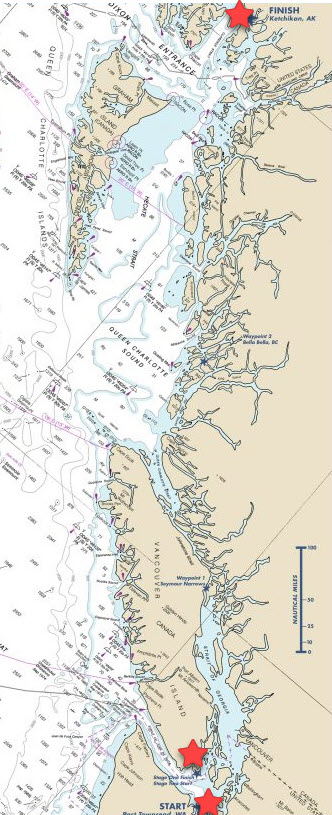 Background:
Background:
Race to Alaska, now in its 5th year, follows the same rules which launched this madness. No motor, no support, through wild frontier, navigating by sail or peddle/paddle (but at some point both) the 750 cold water miles from Port Townsend, Washington to Ketchikan, Alaska.
To save people from themselves, and possibly fulfill event insurance coverage requirements, the distance is divided into two stages. Anyone that completes the 40-mile crossing from Port Townsend to Victoria, BC can pass Go and proceed. Those that fail Stage 1 go to R2AK Jail. Their race is done.
Stage 1 Race start: 0500 June 3rd, Port Townsend, Washington
Stage 2 Race start: 1200 June 6th, Victoria, BC
There is $10,000 if you finish first, a set of steak knives if you’re second. Cathartic elation if you can simply complete the course. R2AK is a self-supported race with no supply drops and no safety net. Any boat without an engine can enter.
Last year 37 teams were accepted and 21 finished.
Source: Race to Alaska


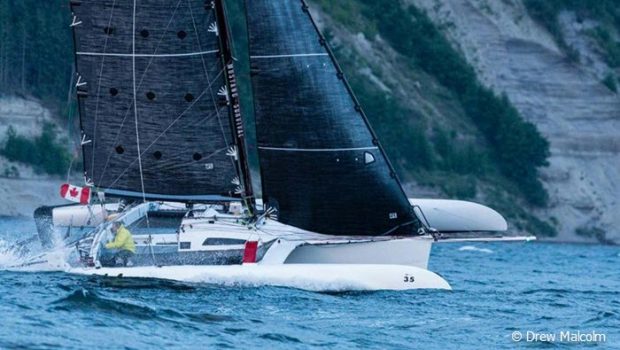


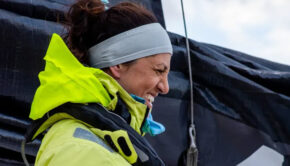
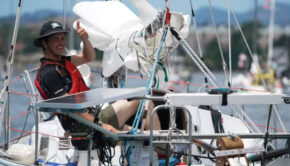
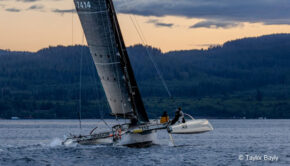
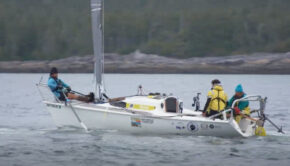
 We’ll keep your information safe.
We’ll keep your information safe.